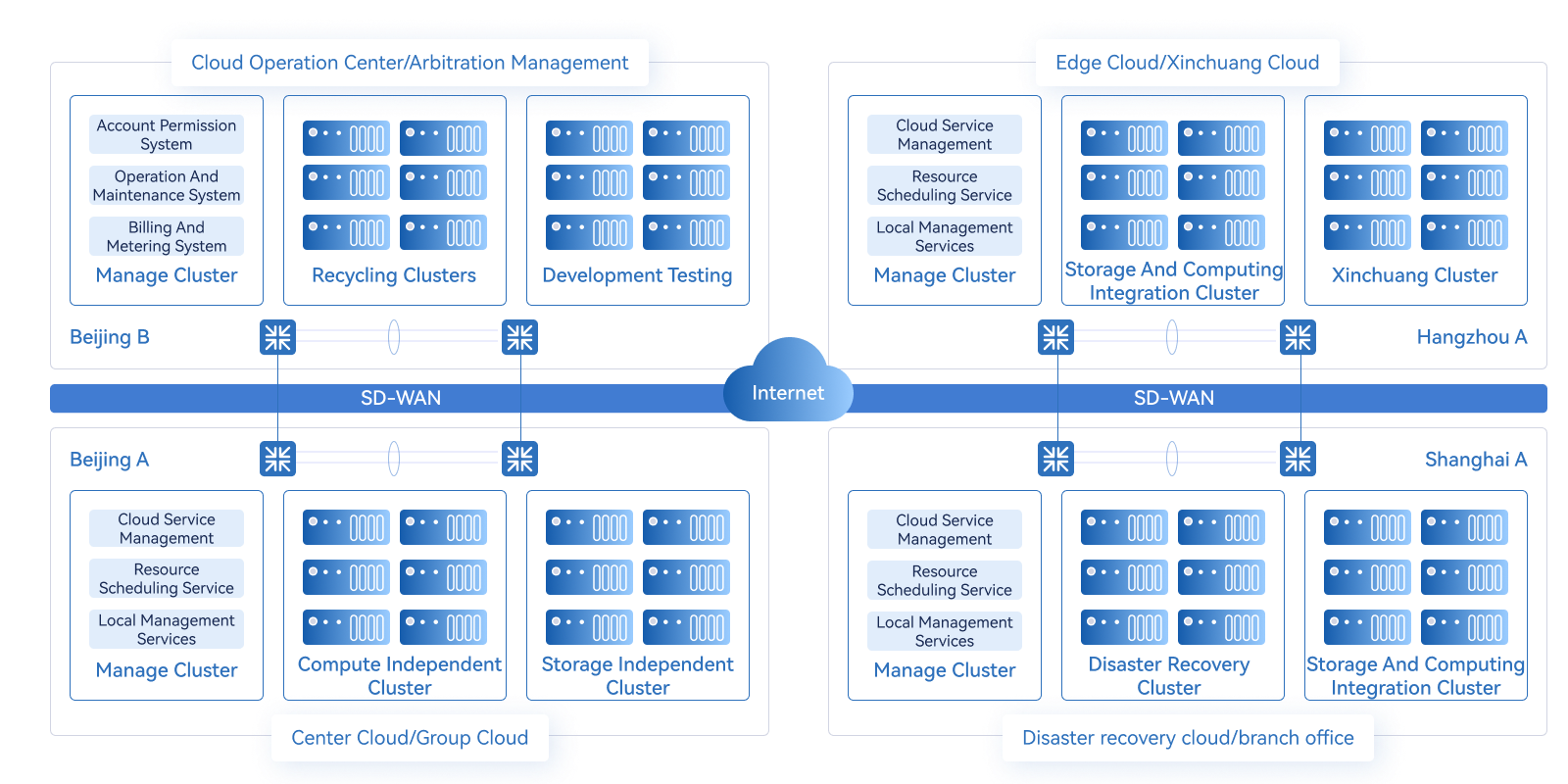Business challenge
Resource differences are difficult to manage
With the procurement of hardware equipment for project construction, the needs of each project vary greatly, resulting in different equipment scales and resource allocation, resulting in increased difficulty in resource management, and continuous investment in human maintenance
Resource utilization is low
The difference of resource allocation affects the planning of infrastructure and recycling of enterprise informatization reform, which cannot give full play to the resource performance of recycling equipment, and is prone to the influence of the wooden barrel effect
Maintenance costs are ongoing
Infrastructure resources are dedicated to the project, and when resources are scarce, other idle resources cannot be efficiently utilized, and fixed-point expansion is difficult, resulting in continuous resource and manpower investment tilt and increase costs
Solution architecture

Scheme characteristics
Multi-tenant management
The multi-tenant mode facilitates resource isolation based on the multi-level organization structure, avoids risks caused by the resource mixing of multiple departments, and facilitates resource audit
Cloud facility self-service
A unified self-service portal provides dedicated consoles for cloud tenants and cloud managers to separate the use of platform resources from the efficient operation and maintenance of underlying resources
Multi-geographic management
Full-stack private clouds can be deployed in multiple regions to achieve unified management and control of global cloud resources and facilities, and share a set of account authentication, resource metering and charging, audit logs, and alarm monitoring
Flexible extension of architecture
The highly available computing, network, storage, and management architecture improves platform stability. The cloud architecture can be flexibly planned, deployed, and managed on demand to ensure customer business continuity.
Scheme value
Remote resources, centralized control
Unified management of remote infrastructure resources of multiple branches or subsidiaries of enterprises to achieve centralized management and control, avoiding the construction of business chimneys and data islands
Unified standard, efficient operation
Unified construction planning of data centers simplifies resource waste caused by customization and heterogeneity, implements standard IT specifications, and improves the efficient use of overall resources on the platform
reduce costs and increase efficiency
Standardized operation and maintenance of each region/branch, continuously reducing differentiated technology reserve requirements, and greatly improving management and operation efficiency
Flexible adjustment and evolution as needed
It supports continuous on-demand architecture adjustment, evolving from hyper-converged architecture to distributed cloud architecture, one-cloud multi-core architecture, and data center disaster recovery architecture

